Picture a glitch: when art goes wrong
7 min read
Harriet Lloyd-Smith visits the Pinakothek der Moderne, Munich for an exhibition dedicated to the art of glitches. She leaves with a mild headache and a mind blown
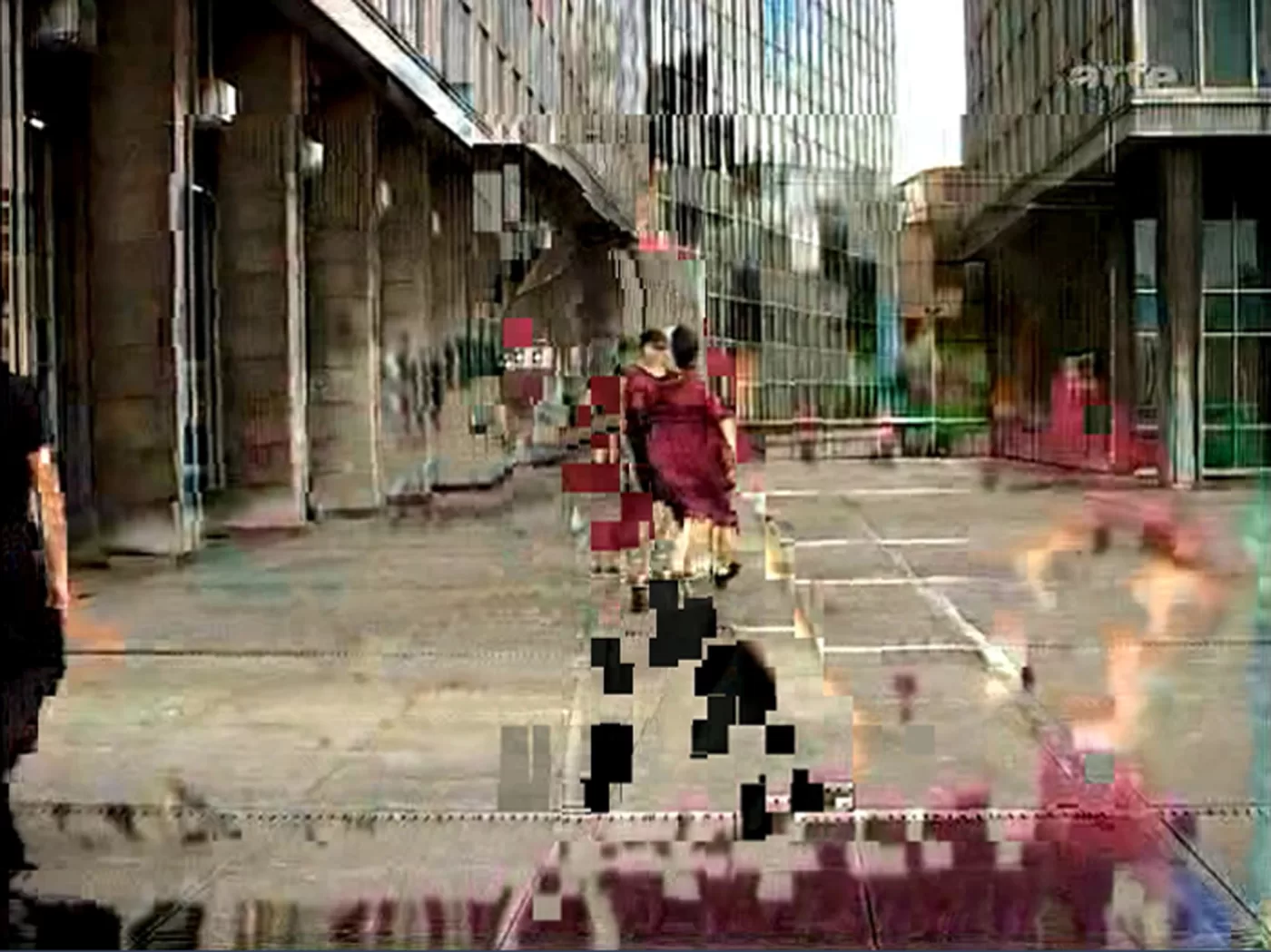
!Mediengruppe Bitnik and Sven König, Download Finished. The Art of Filesharing, 2006 3-channel video installation. Copyleft: !Mediengruppe Bitnik & Sven König
Picture a glitch. What do you see? A cluster of wayward pixels? A mass of chromatic shards splintering a screen?
Artists embracing flaws, errors and malfunctions in their work is a long and well-trodden path; that unruly drip of paint, the smudge of a hand, the imprint of a maker’s finger in a hunk of clay. Mistakes are made in art, but mistakes can also make art.
“We have never yet seen a perfect picture,” reported the Photographic Art Journal in 1851. And as the recent spate of AI-generated nonsense has reinforced, the perfect picture simply cannot exist. But back when photography was in its infancy, photographers strove for a flawless image of the world. Instead, they had to contend with materials that had minds of their own. ‘Defects’ and errors were rife, and although the term took another century to invent, they are seen in the context of a new show at Pinakothek der Moderne as early forms of glitches.
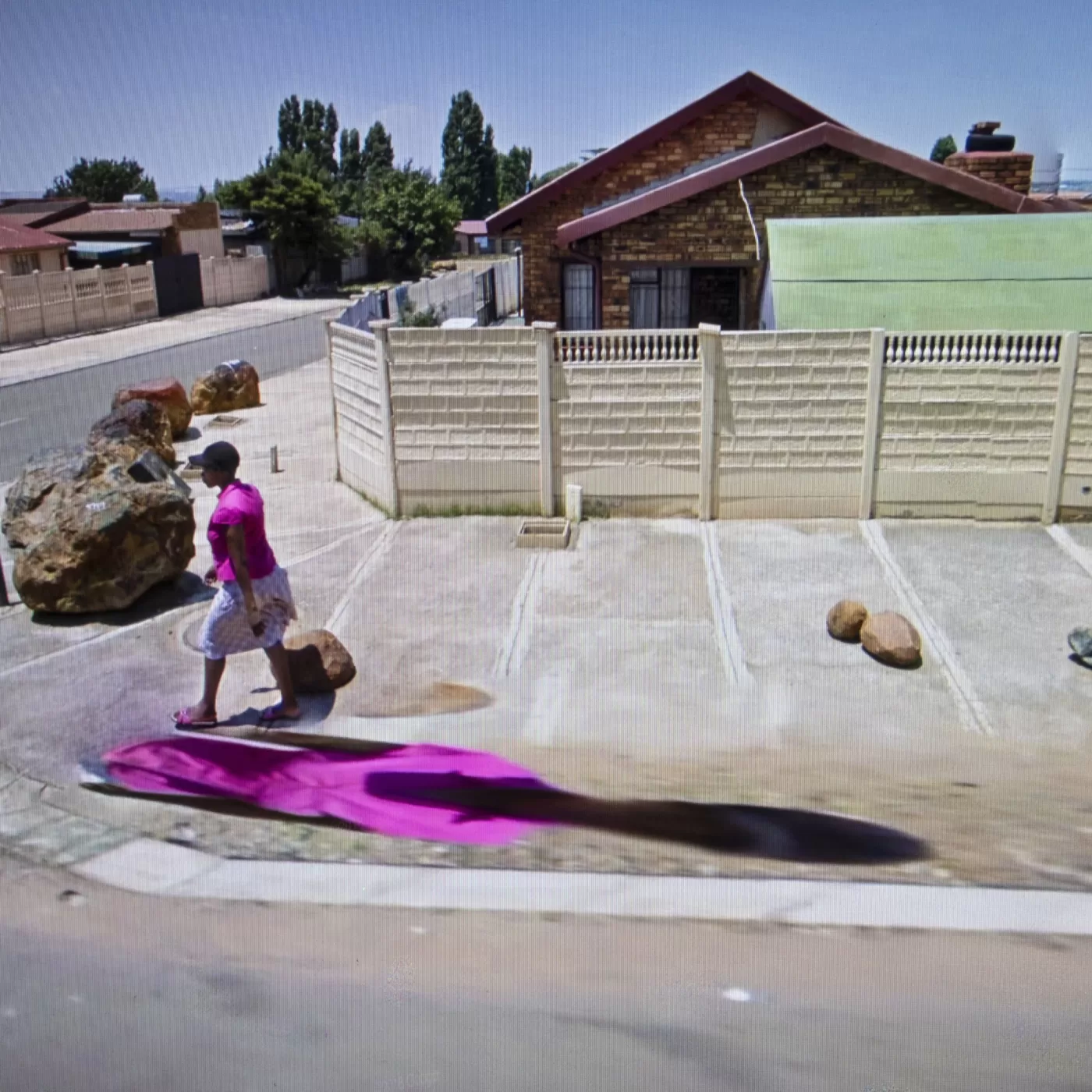
Mame-Diarra Niang, Turn #2, from the series: Call Me When You Get There, 2020. © Mame-Diarra Niang / courtesy the artist and Stevenson, Cape Town, Johannesburg, Amsterdam
The word glitch is rooted in the German glitschen (to glide or slither) and the Yiddish gletshn (to slip or slide). It was first used in the 1950s as the technical jargon of radio and television engineers to describe an unexpected malfunction, but it was only in the 1970s, in the nascence of computer gaming, that the term entered common usage for a programming or graphic error. In the 1990s, with the rise of digital images, glitches made their way into art.
For ‘Glitch: The Art of Interference’ at the Pinakothek der Moderne, curator Franziska Kunze selected 50 artists from the past 100 years who have, in varying forms, confronted the glitch. To fit into the criteria of ‘glitch art’, an artist must intentionally instigate, deliberately program or willingly embrace the occurrence of digital or analogue errors. The results are a jungle of malfunction: tools behaving badly, artists using tools as they shouldn’t and sequences of events that could never be repeated.
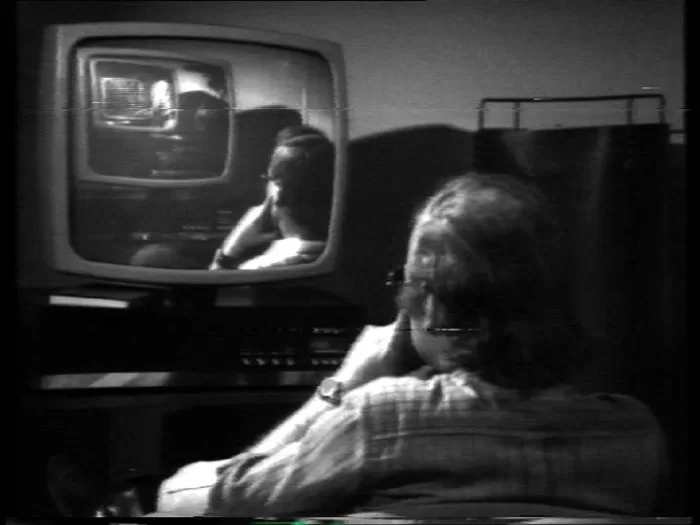
Peter Weibel (1944-2023, AT), The Endless Sandwich, 1970/1972 © The Estate of Peter Weibel
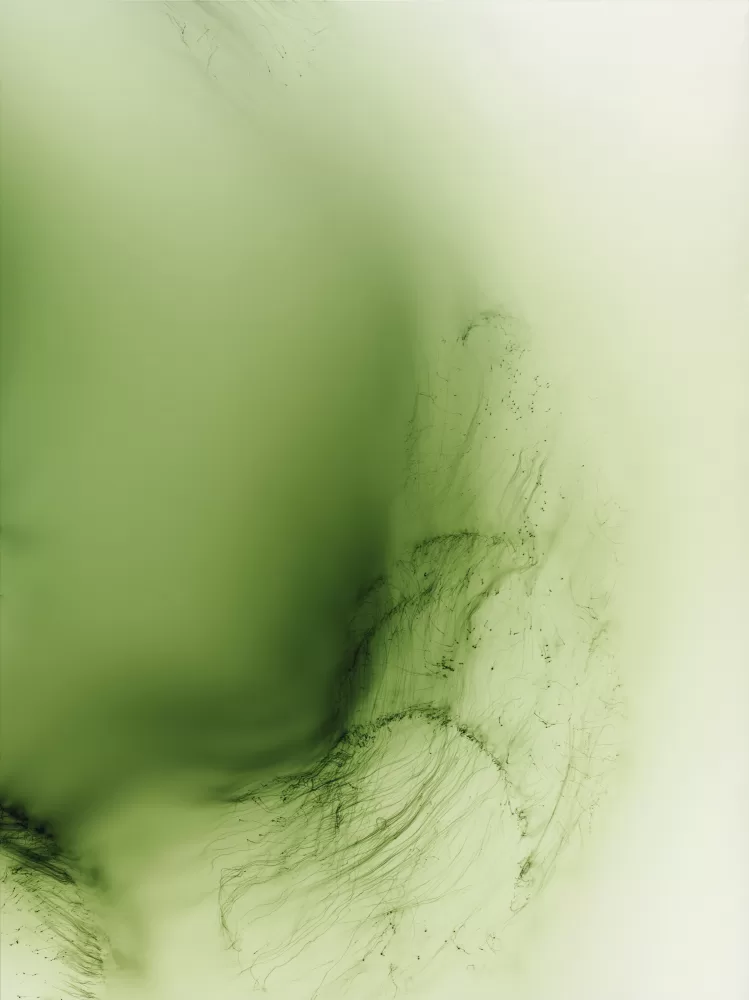
Wolfgang Tillmans, Freischwimmer 52 (from: Munich Installation 1991- 2004, 2005). Courtesy Galerie Buchholz.
Inside the show’s first section, it’s so far, so monochrome. The Endless Sandwich, a film by Peter Weibel (1944-2023) is an immediate eye-catcher. The image of a viewer sitting in front of a TV is repeated in an infinite echo like a line of Russian dolls. When a fault occurs with the most distant set shown, the next viewer has to get up to repair it, which propagates through the TVs until it reaches the physical set, when the real viewer has to rise and eliminate the fault.
In the next room, there’s a black square. Malevich? Actually no, Man Ray. It’s a photogram, a cameraless print, whereby objects placed on photosensitive paper appear in negative. Except in this case, Ray put nothing on it, so we see nothing, or everything, depending on how you look at it. Accompanying the image is a quote: “A certain amount of contempt for the material employed is indispensable to express the purest realisation of an idea.”
I’m sure many artists can relate to having, at times, contempt for their materials. But as we soon find, forced and unforced errors can be used as material. There’s an image from Wolfgang Tillmans’ Freischwimmer series, for which he exposes photosensitive paper to a torch, resulting in something akin to an acid-green micrograph. Elsewhere, Mame-Diarra Niang travelled the world via Google Maps glitches in Call Me When You Get There, while Nick Briz confronts the overwhelming speed of digital culture through an ambush of glitched original and remixed footage.
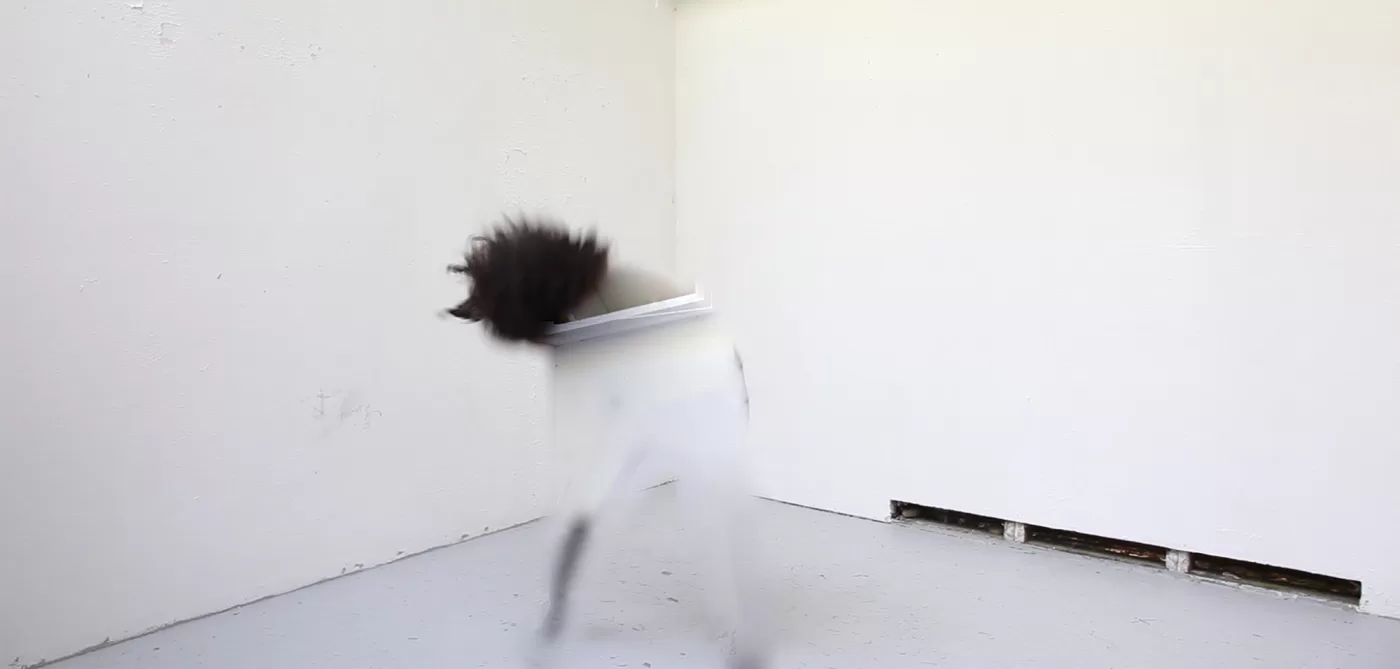
Sondra Perry, Double Quadruple Etcetera Etcetera I & II, 2013. © Sondra Perry, courtesy Bridget Donahue, New York City and Electronic Arts Intermix (EAI)
‘Critical Disruptions’ explores how artists are using glitches as symbols for the socio-political conflicts that simmer beneath civilisation. In Sondra Perry’s Double Quadruple Etcetera Etcetera I & II (2013), two performers whip their bodies around a dazzlingly white space, into which they almost dissolve – a commentary on the erasure of Black people in media.
Arthur Jafa’s film Yellow Jacket (1999) features a ground-level street scene of a man lying on the pavement as the public walk past obliviously. It’s shot on a very slow shutter speed, which creates a hazy, trippy sea of of blurs and light trails. As Jafa said in his artist statement, “I see myself as an undertaker. I’m trying to grab people and say, look, this is what’s going on under the surface of things.”
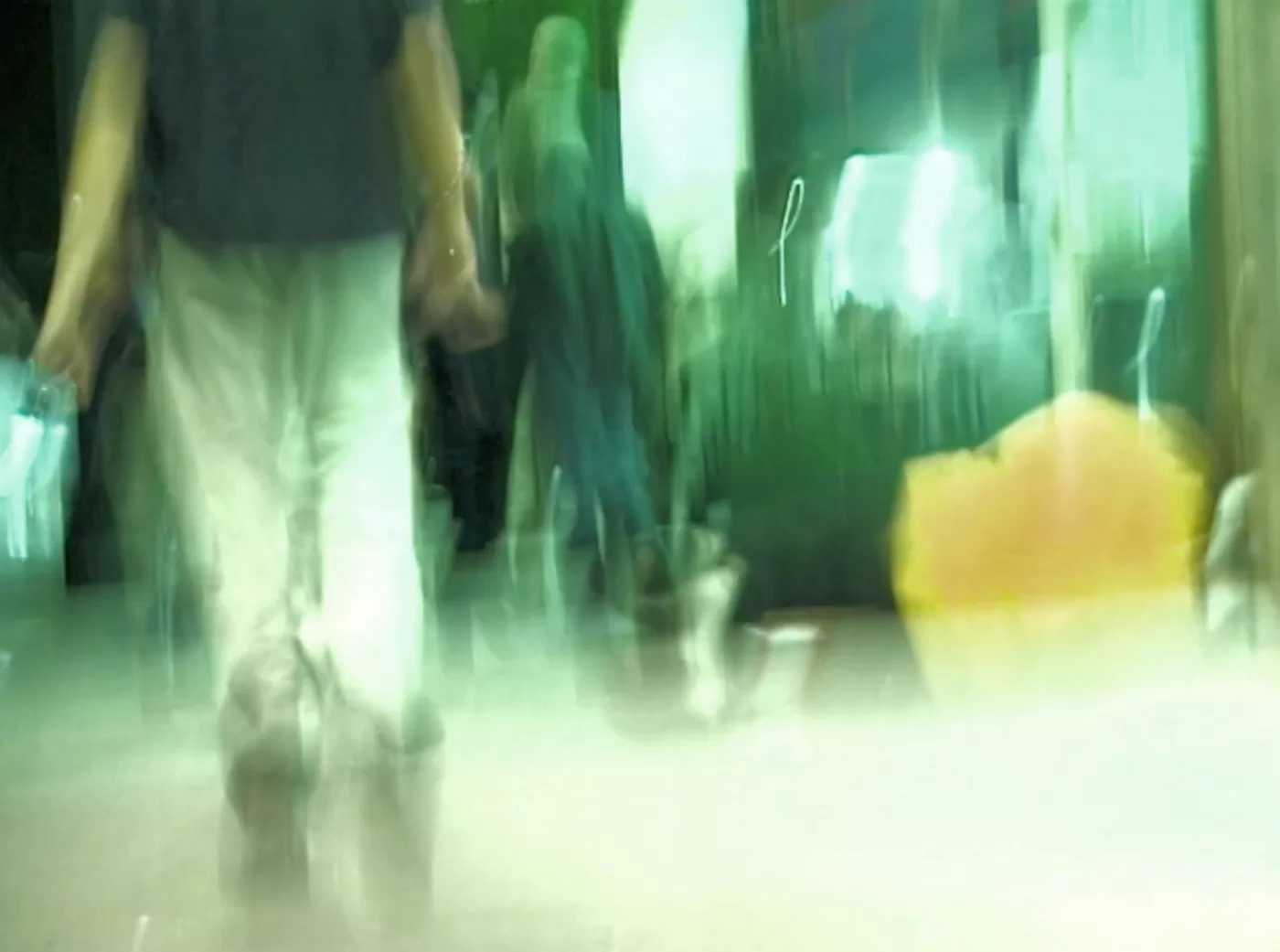
Arthur Jafa, Yellow Jacket, 1999. © Arthur Jafa. Courtesy Arthur Jafa and Gladstone Gallery
The show is at its most effective when the audience can trigger – or become – the glitch. In Nam June Paik’s Magnet TV – Life Ring Witch Manipulate, The Face of President Nixon (1964–2001), those brave enough to press the big red button will see an instant warping of the screen caused by magnets. Nam June Paik visualises political distortion by literally distorting the politician.
But some glitches aren’t mistakes or inconveniences, or have anything big to say about the state of the world. Sometimes they’re just fun and games. William Forsythe’s City of Abstracts (2001), a 24-panel screen that mirrors the audience in front of it. When they move, their bodies distort and contort like the sort of inflatable air dancers found on the roofs of American car dealerships. As Forsythe said of the installation: “Through trial and error, viewers learn how to activate themselves in order to know more about their role in the construction of the images on the screen. What results are inadvertent choreographies, initiated through inquiry, not intent.”
Like its subject, ‘Glitch’ is unruly, unpredictable and at times, feels like a subject too big for its roots. I leave with a mild headache and lingering thoughts about momentary slips; accidents; human and non-human errors – life’s full of them. The moral of the glitch? Nothing is perfect, some things are out of our control. And that’s something to be very happy about.
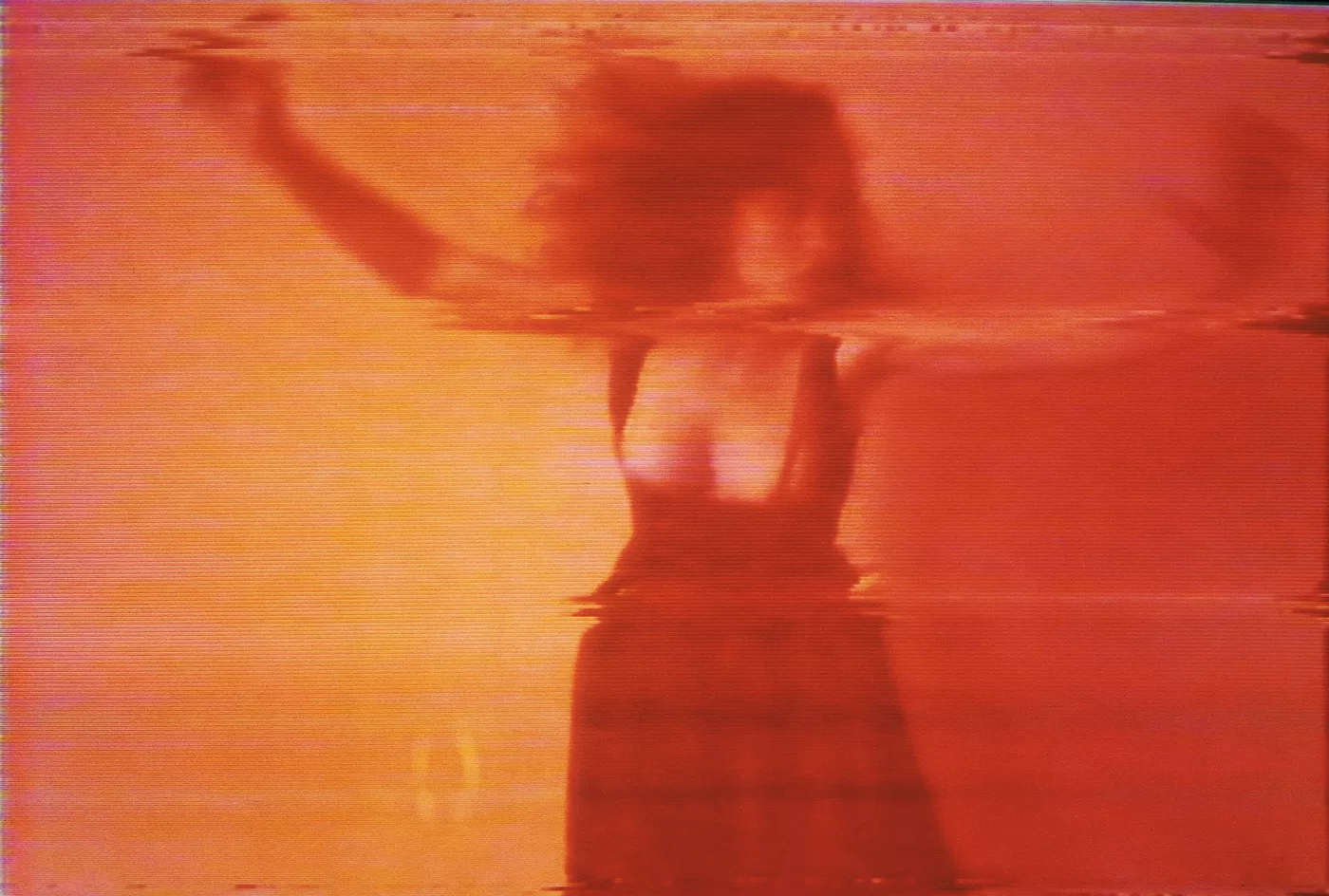
Pipilotti Rist, I’m Not the Girl Who Misses Much, 1986. © VG Bild-Kunst, Bonn 2023. Courtesy the artist, Hauser & Wirth and Luhring Augustine
‘Glitch’ runs until 17th March 2024 at the Pinakothek der Moderne, Munich. pinakothek.com. The exhibition is supported by Richard Mille